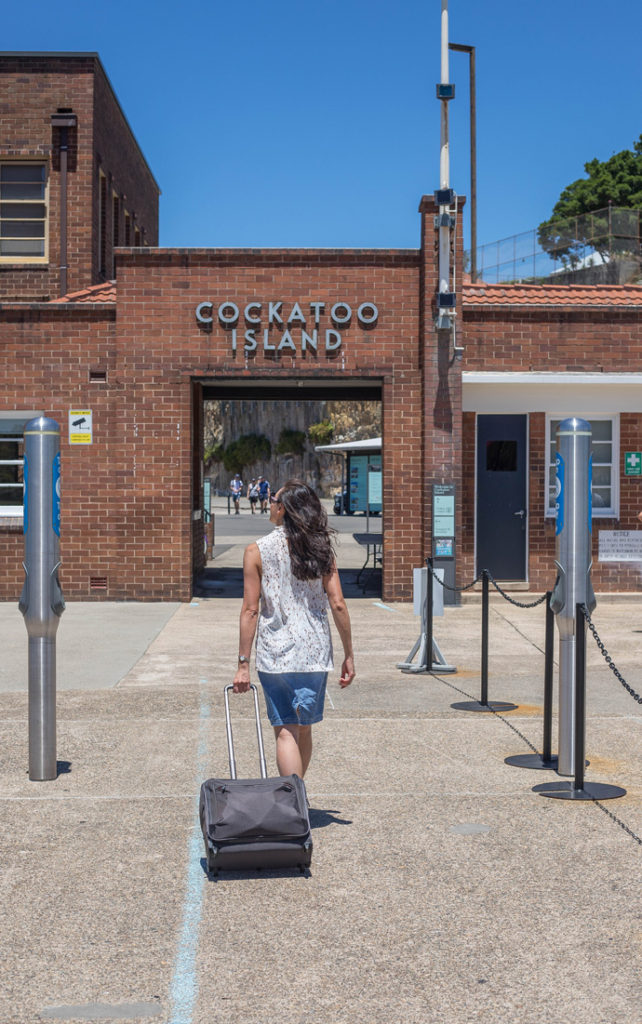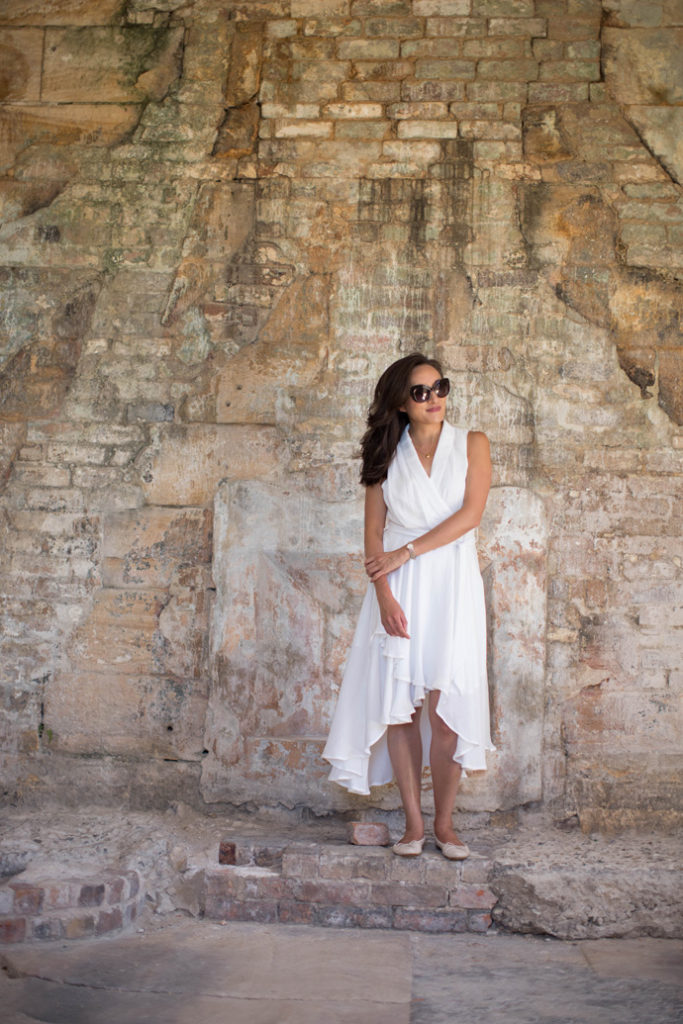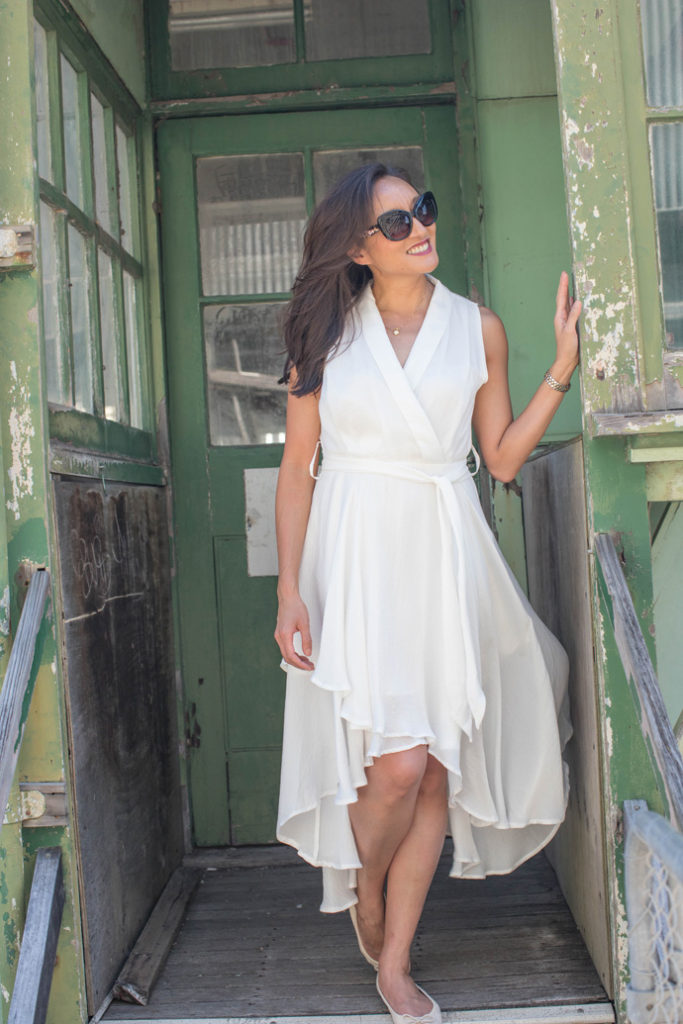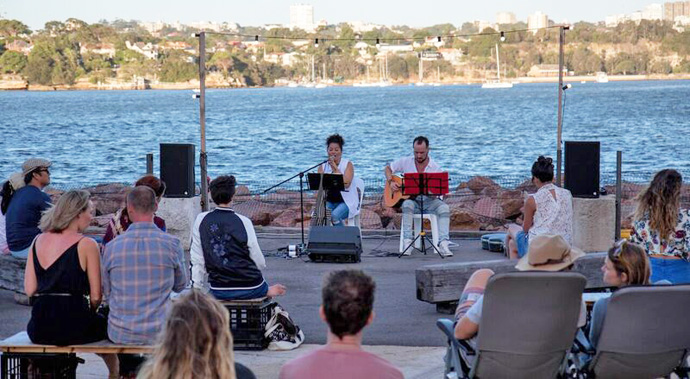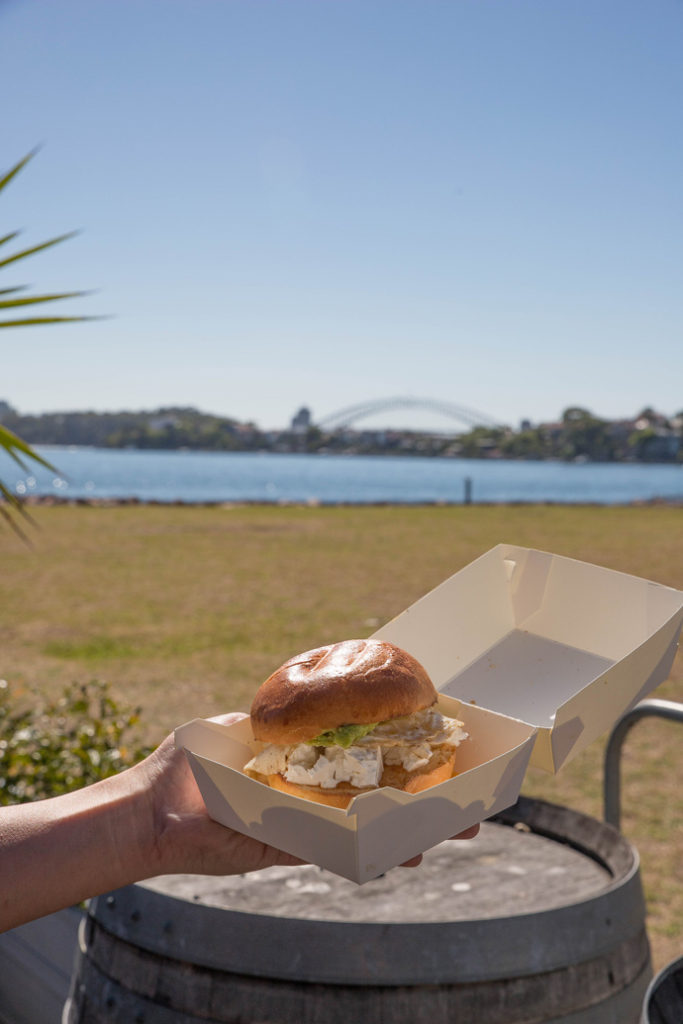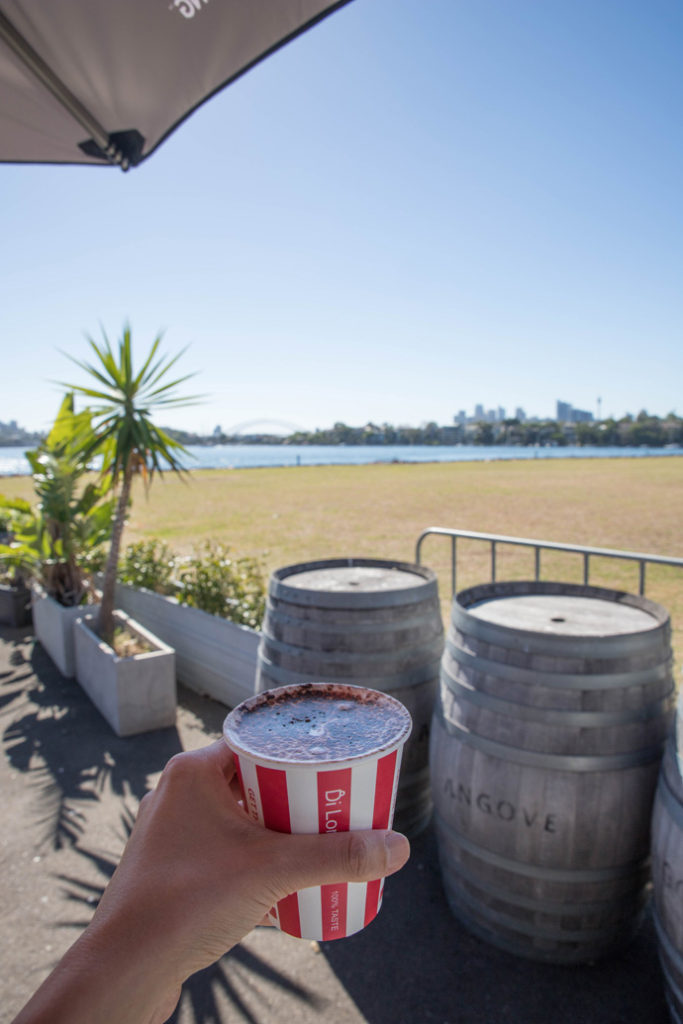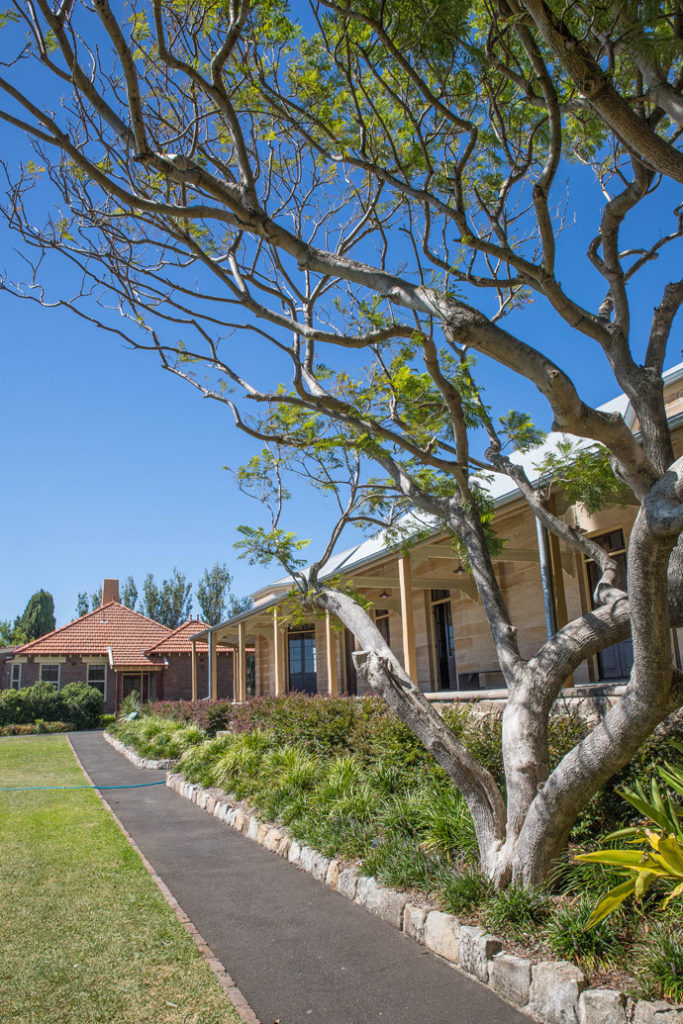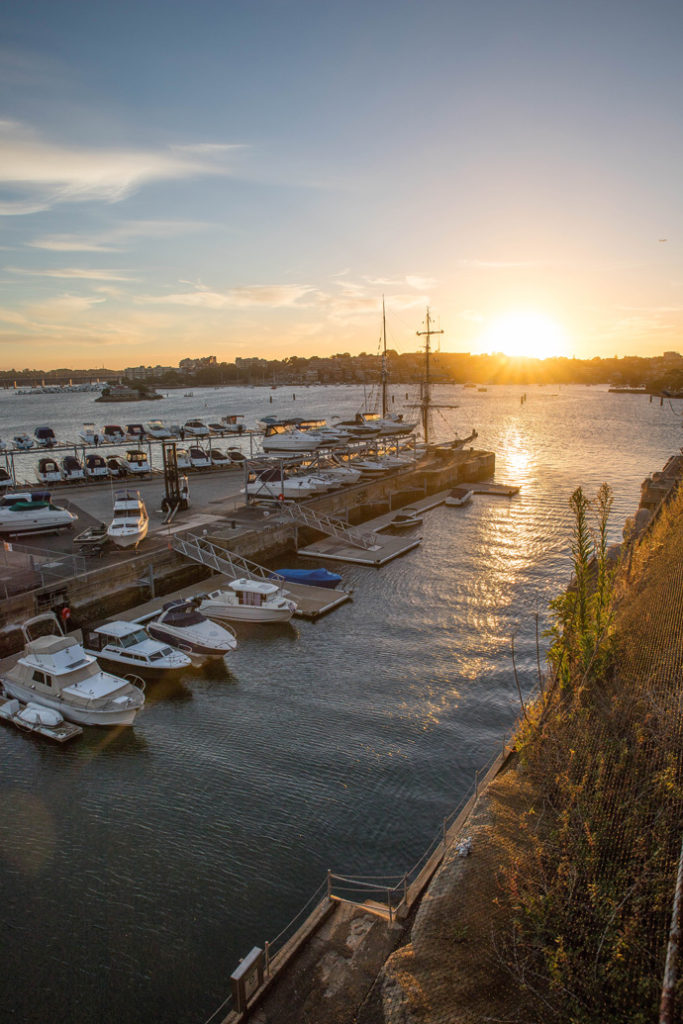 I’ve lived in Sydney in all my life and I’ve never been to Cockatoo Island until recently. Where is Cockatoo Island? You could say it’s like going overseas without leaving Sydney. As I finished packing my overnight bag, I did a quick Google search to see where I was going. Cockatoo Island is located at the junction of the Parramatta and Lane Cove rivers, in Sydney Harbour. On the Google Map, it was in the Inner West region, a little island in the middle of the Parramatta River of Drummoyne, Woolwich and Birchgrove surround it. The easiest way to get to Cockatoo Island for me was to get the train to Circular Quay and then hop onto the Sydney Ferry service to Cockatoo Island. The Parramatta River service stops at Cockatoo Island wharf in just under 15 minutes. Bring your Opal card too. I can’t think of a better and cheaper way to explore Sydney’s spectacular harbour and we are lucky to have such a beautiful harbour, whose beauty is only magnified on a sunny Saturday. The ferry on the way there stopped at the new precinct of Barangaroo too and it really is beautiful and scenic journey.
I’ve lived in Sydney in all my life and I’ve never been to Cockatoo Island until recently. Where is Cockatoo Island? You could say it’s like going overseas without leaving Sydney. As I finished packing my overnight bag, I did a quick Google search to see where I was going. Cockatoo Island is located at the junction of the Parramatta and Lane Cove rivers, in Sydney Harbour. On the Google Map, it was in the Inner West region, a little island in the middle of the Parramatta River of Drummoyne, Woolwich and Birchgrove surround it. The easiest way to get to Cockatoo Island for me was to get the train to Circular Quay and then hop onto the Sydney Ferry service to Cockatoo Island. The Parramatta River service stops at Cockatoo Island wharf in just under 15 minutes. Bring your Opal card too. I can’t think of a better and cheaper way to explore Sydney’s spectacular harbour and we are lucky to have such a beautiful harbour, whose beauty is only magnified on a sunny Saturday. The ferry on the way there stopped at the new precinct of Barangaroo too and it really is beautiful and scenic journey.I disembarked Cockatoo Island wharf and wheeled my overnight bag to the Visitor’s Centre where I checked into my Harbour View apartments. Looking around, the island’s convict and shipbuilding past are evident in the building structures and you could mistakenly call it Seagull Island instead of Cockatoo Island, now being a nesting ground to a large seagull population. I was given a map so I could get my bearings and then I was taken by buggy to my apartments. It was relatively easy no fuss sort of check-in. Check-in time is normally 3pm but I managed to get an earlier check-in of 12pm.
Even if Australian history wasn’t your thing, the views from Cockatoo’s Island incredible location is enough to draw you here. The apartment I was staying at was charming and it use to be the former residences of the island’s Launch Driver and Coxswain. There are three Harbour View Apartments – for two, four, or up to ten guests when combining Apartments A,B & C. The apartments have been beautifully restored to take in the sweep and magnificent views of Sydney Harbour.
Cockatoo Island is the largest island on Sydney Harbour and is UNESCO World Heritage listed because of its fascinating past so I thought it important to understand what and why. I was advised that once I settled in my apartment I could wander back down to the Visitor’s Centre and take the self-guided audio tour ($5) of the island to learn of its history, which I did. The audio tour was easily to follow and you are given a map and key buildings and structures are numbered. There are 3 main sections to see and explore on Cockatoo Island:
UNESCO World-Heritage listed Convict Precinct. This is where you can wander through the old prison cells and discover it’s history from 1839-1869 where this was a place for reoffending convicts and not surprisingly they were subject to the harshest of conditions. Governor Gipps chose it for the site of a new penal establishment to alleviate overcrowding on Norfolk Island, a fascinating place that I’ve also been too (you can read my story here) and it’s interesting to hear of its connection. Convicts were put to work initially quarrying stone for various projects around the colony. They also built stone prison barracks, a military guardhouse, granary silos, official residences and commenced work in 1847 on the Fitzroy Dock which took ten years to complete, all now part of the island’s heritage.
Breaking free from the island wasn’t easy as firstly the convicts had to know how to swim and secondly the harbour was shark infested. I loved the story of how in 1856 Fred Ward was sentenced to seven years on Cockatoo Island for stealing horses. In September 1863 Mary Bugg, his devoted part-Aboriginal wife, took the risk and swam to the island and left him the tools he needed to break free. Two nights later Ward and his mate Fred Britten made a swim for it. Britten drowned, but Mary was right there on the shore waiting for Fred Ward, along with a fast, white steed, right beside where the Dawn Fraser Pool is now. Fred and Mary got away, and galloped off into the sunrise.
Ghosts of Biloela. After the convict settlement, Cockatoo Island became a reform school for girls.
Ship Design and Industrial Precinct. The maritime history of Cockatoo Island began within a decade of the penal settlement being established. As the volume of shipping in Port Jackson increased, Governor Gipps proposed to his Imperial masters in London the construction of a dry dock for the repair of Royal Navy and other vessels. Cockatoo Island also became Australia’s first naval dockyard in 1913 and the nation’s leading shipyard during WWII.
Even if history is not your thing, the incredible views of Sydney Harbour will please.
I was happy just to sit on my balcony and soak in the sun and view of Sydney Harbour. The apartments are beautifully restored historic houses and the interiors with interiors that are modern and clean fitted out with full kitchens and entertaining areas. It would make a great romantic getaway with your partner too without leaving Sydney but isolated from the crowds of the mainland. If you want to take your kids for a camping experience, you can go camping or glamping on the north side of the island and they are reasonably priced too. Make sure they leave their iphones at home as internet reception is pretty good here! I like my creature comforts of own bathroom amenities so the Harbour View apartments suited me really well.
I also booked tickets to see Acoustic Campfire Sessions where you can watch some of Sydney’s best homegrown acoustic talent whilst the sunsets on Cockatoo Island. Tickets are $25 for the general public or $15 for campground guests. You can also check the Cockatoo Island website to see other events that are on.
As for the ‘taste’ part of the Cockatoo Island, it would probably be fair to say there is more to ‘see’ than ‘taste’ although Cockatoo Island’s Societe Overboard café well accommodated us for a good fresh breakfast and awesome coffee. Otherwise, it is ideal to bring your own food if you stay overnight.
Getting there
The F3 Parramatta River service runs ferries to and from Cockatoo Island all year round.
As you’re visiting an island, make sure you check ferry times and prices at www.transportnsw.info before you arrive.
Please also be aware that Sunday and Public Holiday ferries are less frequent and finish around 7pm.
I caught the ferry from Circular Quay and got there in just under 15 minutes
Accommodation
Harbour View Apartments start from $315 per night but you should check their website for updates
http://www.cockatooisland.gov.au/
Other tips:
· Bring your own snacks and food
· Check the What’s On page on the Cockatoo Island website to see what events are on.








